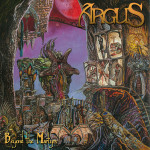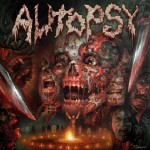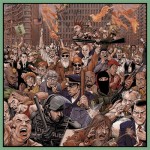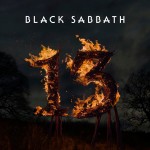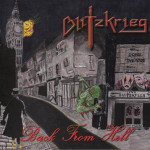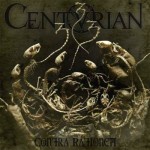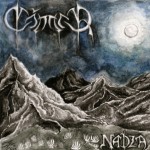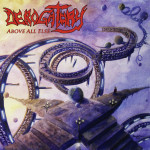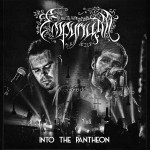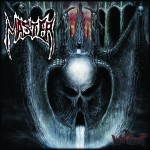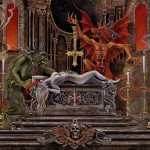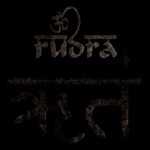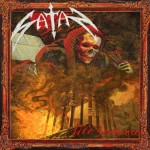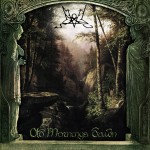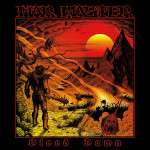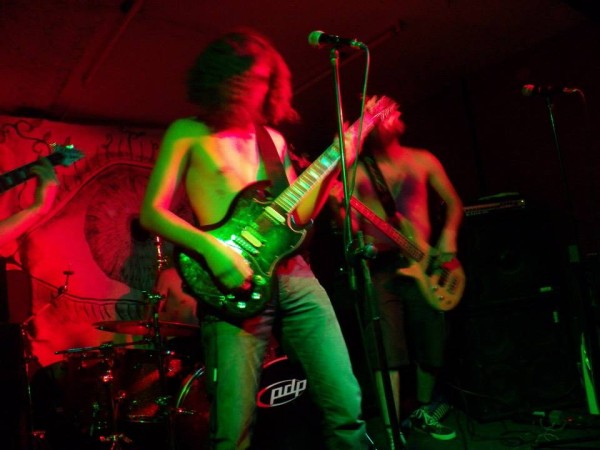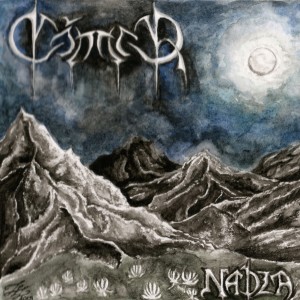I used to loathe end-of-year lists. They struck me as a pointless chance to advertise what should have been obvious before. Over the years they have risen in my estimation as a way not only to mark the year, but to bring up the gold that gets lost in the chaos of everyday life. And yes, they’re also shopping lists for the metalhead in your life.
This year our list is surprising even to hardened cynics. At a time when metal is bragging up and down the Williamsburg alleys about how “innovative” and “ground-breaking” it is, that novelty turns out to be the remnants of the 1980s: emo, pop punk, shoegaze and indie. The real innovation is as always underground, because to get out of the hive mind one must first remove oneself from participation in normalcy.
Thus what you will find here is not what you will see in either (a) the big-label-financed slick magazines and web sites or (b) the majority of small zines and websites out there. That is because the genre as a whole has shifted from creation towards an idea to emulation of the past, or reaction to the past by trying to adulterate it with outside influences. Neither approach succeeds.
When a reviewer chooses an album, he should pick one that will last in your collection. Your time is limited, as is your money. Thus we look only for works that you can purchase and enjoy over the years, and can return to with a sense of wonder and discovery as new angles and nuances emerge. This standard seems high, so they call us elitists. What we really are is people who love metal and want it to be strengthened by its best, not weakened by accepting its worst.
The following albums are those that merit such a standard:
Rejecting the notion of newness in itself, Argus returns to fundamental influences from the 1980s and makes a band that sounds like a fusion between Mercyful Fate, Iron Maiden and Candlemass. Guitar riffery is designed to be inventive and interesting in its own right but is trimmed down to what fits the function of each song. As a result, these songs “sound like” the classics in more ways than one. They are thoughtful and deliberate, purposeful and driven. Classic heavy metal riffs merge with meandering leads that somehow pull it all together, under the mournful voice of a vocalist who clearly enjoys classic Candlemass both in vocal delivery and sense of melody. See full review / interview.
Autopsy are famous for their contributions to death metal which notably peaked in Mental Funeral where their chaotic tendencies got wrapped up in their sense of atmosphere and produced a dark ambling journey into the subconscious. Of their later works, The Headless Ritual gets close to such a balance although it aims for something more everyday. This is an album that wants to deliver classic death metal thrills, and it does so with moderately paced songs that balance melody and savage chromatic riffing. Chris Reifert’s drumming pirouttes and grapples through vicious tempo changes as riffs unlock a Lament Configuration that is equal parts nostalgia and invention.
What happened to real thrash, like DRI and Cryptic Slaughter? In much the same vein as hardcore punk before it, thrash was so intense that it burned out after only four years of real presence. Birth A.D. wisely choose not to “bring it back” but rather to pick up as if thrash were a party and the next day, the hung over participants awaken among the ruins. They’ve sharpened its message, which merged the anarchy of punk with the search for societal purpose of metal, and given its riffs the S.O.D. speed metal infusion without unduly modernizing them. As a result, these two-minute songs hit hard and retreat into the jungle, leaving behind their sardonic lyrics mocking society for being so stupid. When the record stops playing, there is a sense of both having received too much information to process, and a sadness that there isn’t more. See full review.
Realizing what Black Sabbath meant to fans not just as a named entity but as a phenomenon, Black Sabbath integrate the sounds of vocalist Ozzy Osbourne’s solo years into their later, more refined music, with citations to Master of Reality as well. The result is a powerful album that is more pop than their original works but, in a time when nu-metal rages on the radio, reclaims heavy metal as having a voice of its own. It also pushes controversy, affirming a presence of God in this world for good or ill at a time when most people want to get polemic one way or the other. A supporting cast of sprawling but hard-hitting songs make this a great immersive lesson and transition from regular rock to metal for new listeners. See full review.
This band shares members with Satan, who also re-entered the fray with an album of strong tunes. Like Satan, Blitzkrieg know how to simultaneously avoid “changing” for change’s sake (inevitably a lateral move to other contemporarily popular genres) and nostalgia for nostalgia’s sake, making instead an album that fits into their catalogue but doesn’t deny the older, wiser status of its members. These are mostly straightforward songs with melodic choruses and driving, riff-centric verses, plus nimble-fingered and harmonically-aggressive soloing. See full review.
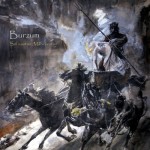 Burzum – Sôl Austan, Mâni Vestan
Burzum – Sôl Austan, Mâni Vestan
People said they wanted old Burzum back. The spirit of old Burzum comes back in this ambient album. It’s a bit more hasty and less refined by fanatical attention to detail than his previous works, but it creates the same world, only zoomed forward in time. It is both a practical and imaginative album. In style, it resembles a cross between Tangerine Dream, William Orbit and the Scandinavian folk music of Grieg, Hedningarna or Wardruna. Strongly ritualized, it unfolds like a descent through mythical worlds and finds its own balance. One of the best offerings in this field. See full review / interview.
For years many of us have wanted this Dutch band to catch a break. They have written several albums of relentlessly pounding, rhythmically intense riffing that somehow doesn’t add up. First, writing the whole album at high speed means that soon it backgrounds itself; second, there was always a lack of melody or song structure to hold it together. Centurian have improved on the latter two and toned down the former to a great degree, such that this is no longer trying to be Krisiun but more like a more Angelcorpse/Fallen Christ approach to Consuming Impulse. The result showcases this band’s dexterity with riffcraft and creates an intense atmosphere of violence. See full review.
This entry album by a new band shows a lot of promise in tackling the power metal format and trying to give it the balls of death metal and funeral doom metal. This contemplative, mostly mid-paced album shows a sense of atmosphere as manipulated by riff, in the death metal sense, given a somewhat upward curve and heroic spin in the best tradition of power metal. Although it’s a new act, and still organizing itself, Cóndor shows that life remains in true metal that can be explored by revisiting its motivations. See full review / interview.
In the tradition of Vader, Mortuary and other fast phrasal death metal bands, Derogatory invoke the classic death metal form with an album of nicely interlocking riffs that reveal a basic but distinctive structure beneath each song. This album is not self-consciously “retro” so much as it is using the voice of the older style, and while it doesn’t expand stylistically, it has found a voice of its own. See full review/interview.
Combining funeral doom metal with European folk music creates for Empyrium a fertile style that is showcased here in a retrospective of the best of their career presented in a rare live setting. Expect plenty of use of silence and resonance to build up these songs, which start slowly and then become engaging before evaporating into more esoteric conclusions. While most funeral doom aims to be dark, Empyrium creates an emotional contrast like a Gothic band, with beauty arising from chaos only to be strangled by inevitability and fall again. See full review / interview.
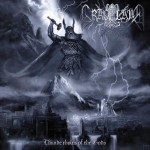 Graveland – Thunderbolts of the Gods
Graveland – Thunderbolts of the Gods
Following up on 2012’s Lord Wind release, Polish/Italian artist Rob Darken unleashes a new work under his black metal brand Graveland. Like the band’s second career-defining Memory and Destiny, this release features Bathory Hammerheart-style guitars which mix speed metal and black metal to produce rhythmic riffing as a backdrop for keyboards and vocals, now featuring also human female vocals and violin. The result is a collision between heavy metal, neofolk and epic movie soundtracks that evokes the glory of the ancient past.
Paul Speckmann is a metal institution who has stayed with death metal from its genesis in the early 1980s through the presence. His latest, The Witchhunt, showcases the stable lineup he has used for recent releases but tones down the overall intensity to focus on songwriting. Fast riffs blend together with touches of melody and the classic Speckmann vocal patterns which resemble the struggles of daily life turned up to eleven. Where previous Master works of recent vintage tended to blend together, on this one each song is distinct. See full review / interview.
Taking a hint from Necrovore and intensifying it through technical prowess, Profanatica step back from the longer melodic riffs of Profanatitas de Domonatia and instead write short, cyclic phrases within compact rhythms in the style of the ancient Texas death metal cult. The result is like a primitive album with complexity embedded in it as melodies expand within fixed riff forms, uniting savagery and beauty in the service of blasphemy. As with all Profanatica works, this is experimental to the extreme, but Thy Kingdom Cum ranks among their most listenable releases. See full review /interview.
The Singaporean maniacs return with an album that uses more traditional melodic death metal riffing but retains its rhythmic structure based on speed metal and possibly the Hindu rituals described in its lyrics. As with most Rudra releases, RTA does not aim for the pop song idea of hitting a sweet spot and luring in your ears. It is the construction of an experience, in this case a dark descent that forges a resolve to continue through warfare and a martial stilling of the reckless personality through militant silence of the soul.
The rougher edge of NWOBHM that was a kissing cousin to speed metal emerges again in this highly musical album from Satan. Like their groundbreaking early 1980s works which presaged the debut of Metallica and birth of speed metal, Life Sentence features inventive riffs in classic song format in which melodic development in the vocals harmonizes riffs to bring songs to a conclusion. Shy of speed metal mostly because it relies on relatively fixed song format which emphasizes verse-chorus riff pairs, this album nonetheless reveals both the greatness of NWOBHM and its continuing relevance in a time of tuneless songs and random song structure. See full review / interview.
After black metal fully constituted itself in the early 1990s in Scandinavia, people looked for the next development along these lines. Some went to dark ambient, but others like Summoning and Graveland instead explored longer melodies and more drawn-out, atmospheric songs. Summoning take a medieval and Tolkien-inspired approach in contrast to the more martial outlook of other bands, and produce as a result immersive waves of melody that evoke a more organic society. With Old Mornings Dawn, these Austrian metal maniacs build on the emotion of Oath Bound but exploit it in more compact and separable songs, making one of the more intense metal statements of the year. See full review.
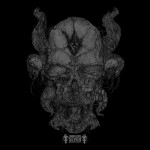 Von – Dark Gods, Seven Billion Slaves
Von – Dark Gods, Seven Billion Slaves
Following up on Von’s early career material like Satanic Blood is not easy; in fact, it’s impossible. A band would either have to re-create that minimalist style and risk irrelevance, or embark on a campaign to dress it up as something it is not. Von has opted for something else entirely which is to create a minimalistic core within a rock opera style of black metal, producing one of the more puzzling but satisfying releases in the underground metal world this year. See full review.
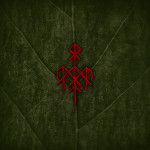 Wardruna – Runaljod – Yggdrasil
Wardruna – Runaljod – Yggdrasil
Combining folk music, world music, droning found noises and the type of ritualistic dark ambient that emerged from the end days of black metal, Wardruna is a black metal side project that offers a different vision of music. While earlier works seemed detached from the end listener, Runaljod – Yggdrasil embeds the listener within a wave of ceremonial sound that aims not to be forebrain listening as Western rock is, but a mentally ambient experience that overwhelms by addressing all of the senses and channeling that experience toward a realization.
Underground death metal continuation act War Master released a four-track EP, Blood Dawn, amidst personnel changes and other upheavals this year. Like the previous Pyramid of the Necropolis, Blood Dawn focuses on futuristic and yet ancient concepts, almost like Voivod taking on Robert E. Howard or Edgar Rice Burroughs. From this vast concept come songs that both grind their way to nihilism and implement the death metal method of matching riffs into an internal dialogue from which a conclusion emerges, creating a pocket of mystery which is filled with wonder and violence.
Album of the year:
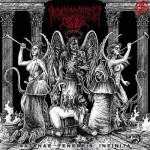 Imprecation – Satanae Tenebris Infinita
Imprecation – Satanae Tenebris Infinita
There is no completely fair way to pick an album of the year from a list with this many strong contenders, but Imprecation win this one on both substance and situation. For substance, this is a solid album that combines a black metal sense of ritualistic song development with the death metal tendency to make abstract riffs into an organic whole. For situation, Satanae Tenebris Infinita sees a band that started in 1991 and is famous for releasing its discography of demos in 1995 finally reach a stage where it can release a full-length album independent of any past influences. In addition, Satanae Tenebris Infinita hits hard and does not relent. Each element serves a purpose toward creating a transition in moods, like a perpetual parallax as continents shift. If death metal was waiting for a direction forward, Imprecation have opened that gate to a new occult science and art of subversive metal. See full review / interview.
The following were considered, and then not so much considered:
- Morbosidad – Muerte De Cristo En Golgota. This is like Krisiun or Impiety rendered in the style of Mystifier, or like any of the war metal bands that imitated Blasphemy but with a dose of downtuned Sarcofago. It’s not bad, but aside from high intensity rhythm, it doesn’t have much to offer. Thus think of it as Satanic death techno performed on muddy guitars.
- Fates Warning – Darkness in a Different Light. Bands: don’t try to roll with the trends. You were good at something else for a reason. This album has strong smary indie rock influences on its vocals and the result is embarrassing to be caught listening to. Riffs are reasonable, but don’t particularly develop, and emphasize space and consistency more than something with a personality.
- Grave Upheaval – Untitled. Not bad; mostly rumbling noises, very true to form. Unfortunately, also doesn’t go anywhere. It’s an atmosphere piece of one dimension.
- Warlord – The Holy Empire. Some sort of rock-metal hybrid from back in the day, this form of power metal uses mostly lead riffing anchored by static open chording. The dominant instrument is the voice, more like Rush or Asia than most metal. It’s pleasant but lullabye and too close to rock music.
- Hell – Curse and Chapter. Do you know how far I would have run to get away from this back in the 1980s? It’s NWOBHM/early power metal without much melodic movement in the riff, so there’s a lot of chugging and shifting but not much actual motion. Nor will you have much actual motion as you listen to this… in fact, you might find yourself immobile and snoring.
- Battlecross – War of Will. This is traditional metal affected by metalcore aesthetics. The vocals follow the surge pattern of later hardcore, and the melodic riffs use rhythmic “chasing” to accelerate patterns older than Chuck Berry. The result is so distracting the band can’t compose a song, but instead write a riff pair and then leap into a blast beat to transition.
- Enforcer – Death by Fire. Here we have another band from Scandinavia creating highly musically-literate, catchy and otherwise perfect music. The problems are twofold: (1) it is a clone of 1970s styles that are liked for their innocent pop cheeze (2) while it is emotive, and aesthetically appealing, it is also empty.
- Queensryche – Queensryche. Since the band went legal on each other, there’s now two Queensryches… this one sounds like Coldplay. The same posi-pop vibe and expansive chorus feel drives this work, and it has a similar outlook on the world, which is a sort of pathological compulsion to make things beautiful instead of finding beauty where it is rare. Unsettling.
- Leprous – Coal. If this Queen-slash-bad-indie band gets anywhere in metal, it’s time to bury the genre under warm ruminant feces. Power metal mixed with dramatic English pop. The result is bracingly twee with metal riffs batting about in the background.
- Iggy and the Stooges – Ready to Die. Almost all reviews of this album will waffle, because it is good, but it’s not distinctive. It all kind of flows together, as if the band paid more attention to the aesthetics of sounding like themselves than whatever’s driving them. But how do you “be punk” when you have a paid up retirement plan and health insurance?
- Abyssal – Novit Enim Dominus Qui Sunt Eius. This was the hip thing for a few weeks, but shows you that you cannot revive a genre by imitating it through outward form. These songs use all the right pieces, but in a random order, and thus create no mood except nostalgia. And I piss on nostalgia’s grave.
- Tyrant’s Blood – Into the Kingdom of Graves. Great title, has a Blasphemy ex-member, can’t go wrong… right? There’s a lot to like about this, but it doesn’t hold together. It embraces the “hotel buffet” style of offering many different riff types in a single song that ends up distorting any coherence. Storming Perdition Temple-style fast metal explodes into melodic mid-paced riffs and then ends up chugging deathgrind, lost and adrift on the seas of making a point.
- Cultes des Ghoules – Henbane. It’s ludicrous that so many in the underground were fooled by this comical album. It’s a lot of bad heavy metal riffs interrupted by “avantgarde” noise, samples, etc. — the usual cliches — so that you don’t notice it’s bog-standard. This is hipster incarnate.
- Acerus – The Unreachable Salvation. Galloping uptempo yet mid-paced heavy metal with a lot of Iron Maiden and Mercyful Fate. Not bad, but not particularly expansive to anything more than that aesthetic role.
- Aosoth – IV: Arrow in Heart. This album, like Immolation, got credit because people expected it should. Its strong point is listenable songs with some technicality; its weakness is that they express nothing strong. It is Participation with an A+ for method and a B- for content.
- Sodom – Epitome of Torture. This rather sentimental, somewhat modern-metal influenced take on a speed metal album is very catchy and represents Sodom’s most professional work, but also loses the unique perspective this band offered on the world around it. This is more like the heavy metal albums of their youths, heavy on emotion which makes their repetitive, chorus-heavy approach almost too saccharine.
- Grave Miasma – Odori Sepulcorum. I have wallpaper. It’s named “It’s 1991 again and you can rediscover things you believed in once again.” It sounds like a mishmash of 1990s era death metal and yet, because it’s wallpaper, it never comes to a point. It just creates an atmosphere.
- Týr – Valkyrja. Power metal of the newer stype seems to me it has a mystery ingredient, and that is devotional music. This sounds like church music, with sweeping choruses and whole-note cadences, and it has an admitted power, but it also loses much of what makes metal powerful: it’s not protest music, nor is it music that tries to cover ugliness with beauty, but music that finds beauty in what is considered ugly.
- Onslaught – VI. Eager to effect a return to the music business, Onslaught speed up their punk/metal hybrid but adopt the vocal styles and constant driving mechanical rhythm of modern metal. The result is unrelenting but also disconnected and monolithic. The catchy choruses don’t help and seem almost to mock the rest of the music, which sounds like a pilotless threshing machine gone amok in a pumpkin patch…
- Death Angel – The Dream Calls for Blood. In the 1980s, speed metal bands had a certain annoying rhythm where they tried to be as obnoxiously bouncy as possible while ranting as intensely as possible. With modern metal much of the internal rhythmic interplay has been eliminated, resulting in something that sounds like chanting Stalinist propaganda with guitars strobing in the background.
- Bölzer – Aura. Like Oranssi Pazuzu, Bölzer experiment in disorganized slowed black/death/heavy metal with mixed-in weirdo alternative rock. Weirdo alternative rock has existed since early rock bands made a name for themselves by being odd. The problem is that it doesn’t connect to form an impression, only a sense of instrumentalism.
- Coffins – The Fleshland. Doom-death with some quality riffing, Coffins nonetheless manage to inevitably get lost in each of their songs and fill the void with noodly pentatonic leads, distracted tributaries of non-essential riffs, and “atmospheric” repetition.
- Metal Church – Generation Nothing. This shrill metal band has always struck me as more in the heavy metal camp than speed metal camp, and here it’s borne out. The riffs don’t have form like speed metal riffs do but are mostly static based on rhythmic repetition. Focus is on the voice, which wails. Not bad but annoying and kind of empty. Also, older guys trying to bond with the new generation is awkward when done this way.
- Malthusian – MMXIII. Like many sonic experiments, this band relies on style to shape content because style is the substance of the experiment. The idea here is to combine the Incantation-clone death metal that is trendy with melodic progressive touches, including some sneakster modern metal influences. The result loses what could have been and fails to transition to what it wants to be.
- Stratovarius – Nemesis. When did this band get so bad? The first track sounds like a rip of Heart’s “On My Own,” and the rest of the album proceeds in this fashion: combine classic metal riff archetype with classic 1980s vocal melody, add some flourishes and hope it’s good enough. I liked it better when this band was more speed metally and less pop.
http://www.youtube.com/watch?v=HmuHHGfUBEE
27 CommentsTags: argus, autopsy, best of, birth a.d., Black Metal, black sabbath, blitzkrieg, burzum, centurian, condor, death metal, derogatory, empyrium, graveland, imprecation, master, Nadia, profanatica, rudra, Satan, Summoning, von, war master, wardruna

